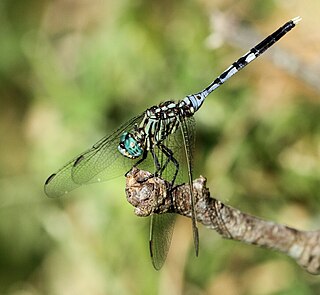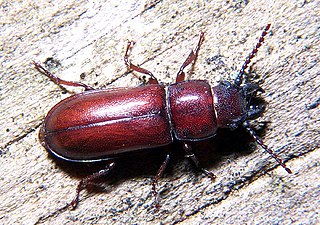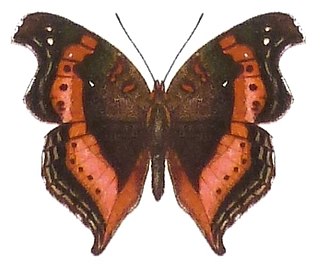
The United Nations Economic Commission for Africa was established in 1958 by the United Nations Economic and Social Council to encourage economic cooperation among its member states following a recommendation of the United Nations General Assembly. It is one of five regional commissions.

Erythrococca is a plant genus of the family Euphorbiaceae, first described in 1849. It is native to Africa and the Arabian Peninsula.

The individual member states of the African Union (AU) coordinate foreign policy through this agency, in addition to conducting their own international relations on a state-by-state basis. The AU represents the interests of African peoples at large in intergovernmental organizations (IGO's); for instance, it is a permanent observer at the United Nations' General Assembly.

The scaly spurfowl is a species of bird in the family Phasianidae. It is found in Angola, Burundi, Cameroon, Central African Republic, Republic of the Congo, Democratic Republic of the Congo, Equatorial Guinea, Ethiopia, Gabon, Kenya, Malawi, Nigeria, Rwanda, São Tomé and Príncipe, Sudan, Tanzania, and Uganda.

The red-headed quelea is a species of bird in the family Ploceidae. It is found in Angola, Benin, Botswana, Burkina Faso, Burundi, Cameroon, Central African Republic, Chad, Republic of the Congo, Democratic Republic of the Congo, Ivory Coast, Equatorial Guinea, Eswatini, Ethiopia, Gabon, Gambia, Ghana, Guinea, Guinea-Bissau, Kenya, Liberia, Malawi, Mali, Mozambique, Niger, Nigeria, Rwanda, São Tomé and Príncipe, Senegal, Sierra Leone, South Africa, South Sudan, Tanzania, Togo, Uganda, Zambia, and Zimbabwe.

Orthetrum stemmale is a species of dragonfly in the family Libellulidae. It is found in Angola, Benin, Botswana, Cameroon, Central African Republic, the Republic of the Congo, the Democratic Republic of the Congo, Ivory Coast, Equatorial Guinea, Gambia, Ghana, Guinea, Kenya, Liberia, Malawi, Mali, Mozambique, Namibia, Nigeria, São Tomé and Príncipe, Sierra Leone, Sudan, Tanzania, Togo, Uganda, Zambia, Zimbabwe, and possibly Burundi. Its natural habitats are subtropical or tropical moist lowland forests, subtropical or tropical dry shrubland, subtropical or tropical moist shrubland, intermittent rivers, shrub-dominated wetlands, swamps, intermittent freshwater lakes, freshwater marshes, and intermittent freshwater marshes.

Parandrinae is a subfamily of Long-Horned Beetles in the beetle family Cerambycidae. There are about 14 genera and more than 120 described species in Parandrinae.

Tourism is an important economic sector for many countries in Africa. There are many countries that benefit heavily from tourism like Kenya, Uganda, Algeria, Egypt, South Africa, Morocco, Tunisia, Ghana and Tanzania. The touristic particularity of Africa lies in the wide variety of points of interest, diversity and multitudes of landscapes as well as the rich cultural heritage. Also, an ecotourist industry is present in some African countries.

Heteropaussus is a genus in the beetle family Carabidae. There are more than 20 described species in Heteropaussus.

Mallodon downesi is a species of beetle belonging to the family Cerambycidae.

Neoplocaederus is a genus of longhorn beetles in the family Cerambycidae. There are more than 50 described species in Neoplocaederus, found in southern Asia and Africa.

Caelostomus is a genus of beetles in the family Carabidae. It contains the following species:
Platyxythrius is a genus in the ground beetle family Carabidae. There are at least 20 described species in Platyxythrius, found in Africa.

Precis sinuata, the wide-banded commodore, is a butterfly in the family Nymphalidae. It is found in Guinea, Sierra Leone, Liberia, Ivory Coast, Ghana, Nigeria, Cameroon, Equatorial Guinea, São Tomé and Príncipe, the Republic of the Congo, the Central African Republic, the Democratic Republic of the Congo, Uganda, Rwanda, Burundi, Kenya, Tanzania, Malawi, Zambia and Mozambique. The habitat consists of forests and woodland.

Hypolimnas salmacis, the blue diadem, is a butterfly in the family Nymphalidae. It is found in Sierra Leone, Liberia, Ivory Coast, Ghana, Togo, Benin, Nigeria, Cameroon, Gabon, the Republic of the Congo, Angola, Equatorial Guinea, São Tomé and Príncipe, the DRC, Uganda, Sudan, Ethiopia, Kenya and Tanzania.

Deudorix lorisona, the coffee playboy, is a butterfly in the family Lycaenidae. It is found in Senegal, the Gambia, Guinea-Bissau, Guinea, Sierra Leone, Burkina Faso, Liberia, Ivory Coast, Ghana, Togo, Nigeria, Cameroon, Equatorial Guinea, São Tomé and Príncipe, Gabon, the Republic of the Congo, the Central African Republic, the Democratic Republic of the Congo, Sudan, Uganda, Ethiopia, Kenya, Burundi, Tanzania, Malawi, Zambia, Mozambique and Zimbabwe. The habitat consists of dense savanna and forests.

This is a list of the Libya national football team results from 2000 until 2019.

Athletics at the 2019 African Games was held from 26 to 30 August 2019 in Rabat, Morocco.
















